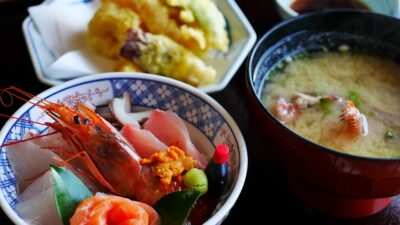Thai cuisine is celebrated globally for its vibrant flavors, aromatic herbs, and complex balance of sweet, sour, salty, and spicy elements. For many food enthusiasts, the question arises: what’s the best way to complement these bold dishes? While beer and cocktails are often the go-to choices, wine can provide an exquisite pairing that enhances the dining experience.
The Essence of Thai Flavors
Understanding the depth of Thai food is essential to making informed wine selections. Key components of Thai dishes include:
- Herbs and Spices: Ingredients like lemongrass, cilantro, basil, and galangal impart fresh, aromatic qualities.
- Heat: Chili peppers add varying degrees of spice, which can change the entire flavor profile of a dish.
- Balancing Act: Sweetness usually comes from palm sugar, while sour elements are derived from lime juice or tamarind, creating the distinct sweet-sour balance that Thai food is known for.
Choosing the Right Wine
When selecting wine to accompany Thai cuisine, consider the following factors:
1. Acidity Matters
Thai dishes often feature bright, acidic flavors. Wines with high acidity can offer a refreshing contrast and enhance the dish’s overall profile. Varieties such as Sauvignon Blanc and Riesling stand out in this category. Their crispness can cut through richness, complementing dishes like Pad Thai or a creamy coconut curry.
2. Sweetness to Balance Heat
Spicy dishes can be daunting when it comes to wine pairing. A slightly off-dry wine or one with some residual sugar can mitigate heat levels. Look for a German Riesling or a fruity Pinot Gris to balance the spiciness of dishes like Som Tum (green papaya salad) or spicy curries.
3. Flavor Harmony
Consider the predominant flavors in the dish. For rich, coconut-based dishes, a richer white wine like Viognier or a full-bodied rosé can pair beautifully. Meanwhile, the herbal notes in Green Curry can be complemented by a light, herbaceous Sauvignon Blanc or a Grüner Veltliner.
4. Red Wine Considerations
While white wines usually take the spotlight, certain red wines can also complement Thai food. Light-bodied reds, such as Pinot Noir or Gamay, can enhance dishes like grilled meats or Larb, a traditional minced meat salad.
The Perfect Pairings
To illustrate these principles, let’s explore some popular Thai dishes and their ideal wine companions:
1. Tom Yum Goong (Spicy Shrimp Soup)
Wine Pairing: Sauvignon Blanc
The citrus notes in the soup align perfectly with the zesty character of Sauvignon Blanc, while its herbal qualities complement the fragrant lemongrass and cilantro.
2. Green Curry Chicken
Wine Pairing: Gewürztraminer
The wine’s hint of sweetness and aromatic profile match the spicy, creamy nature of the curry, offering a delightful contrast without overwhelming the palate.
3. Panang Curry
Wine Pairing: Pinot Noir
A light-bodied, fruit-forward Pinot Noir enhances the rich coconut curry without overshadowing the complex flavors, making it an excellent companion.
4. Pad Thai
Wine Pairing: Riesling
The balance of sweetness and acidity in a Riesling beautifully complements the sweet-tangy tamarind sauce, while its crispness refreshes the palate.
Conclusion: Finding Your Perfect Pairing
Pairing wine with Thai food provides both a challenge and an opportunity for delightful exploration. By understanding the flavors at play and employing the principles of acidity, sweetness, and flavor harmony, you can elevate your dining experience. Ultimately, personal preference plays a significant role in wine selection. Don’t hesitate to experiment and find what works best for your palate. Enjoy the journey of pairing, and may your next Thai meal be an adventure in flavor!



